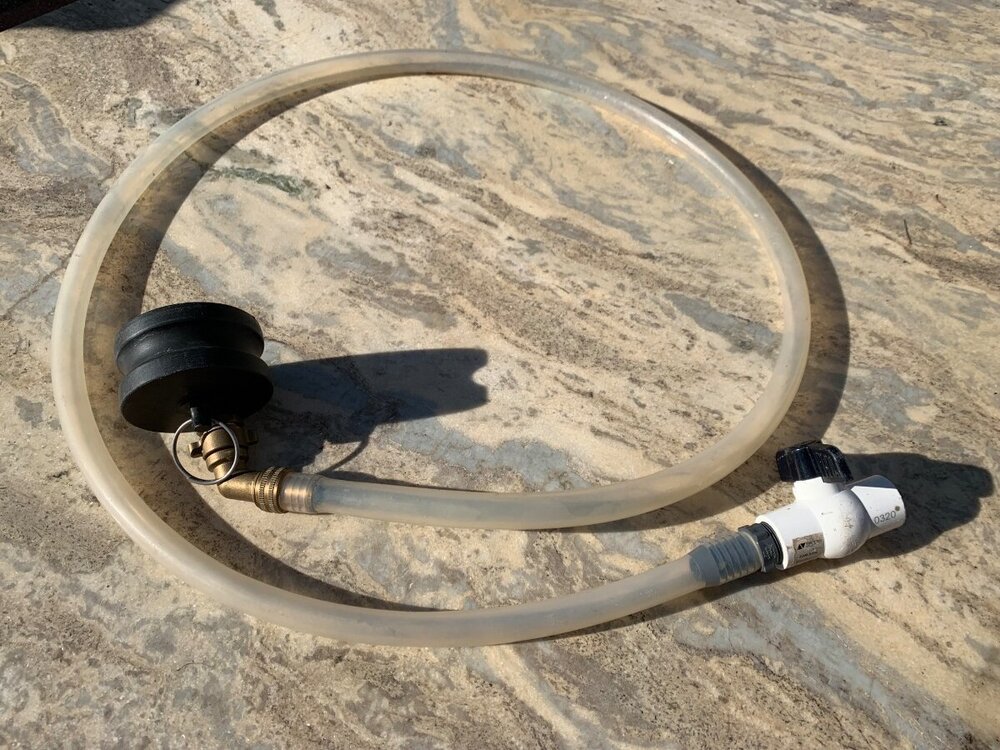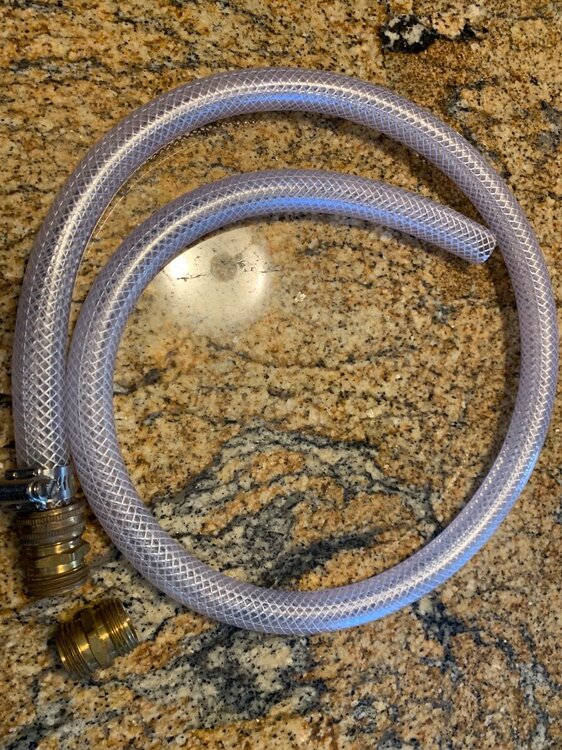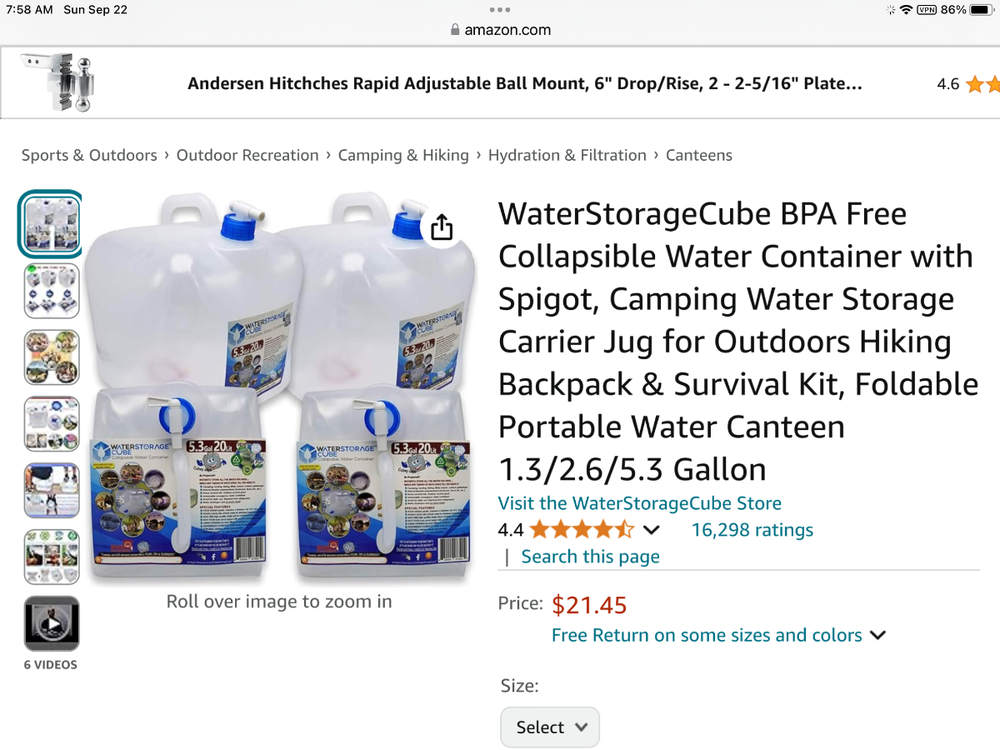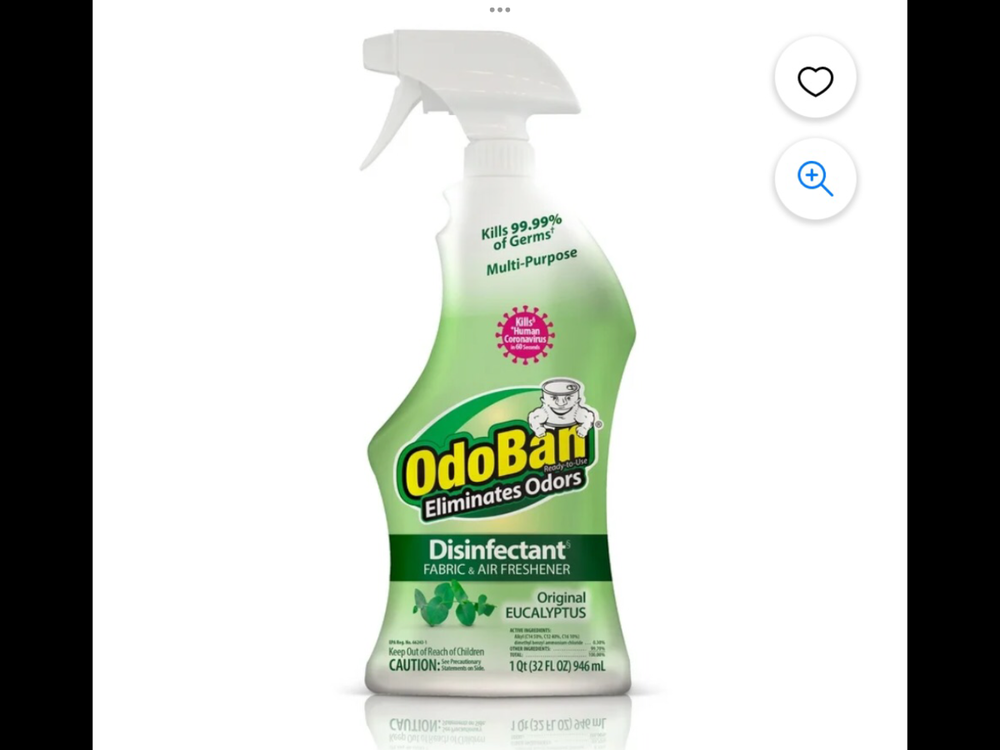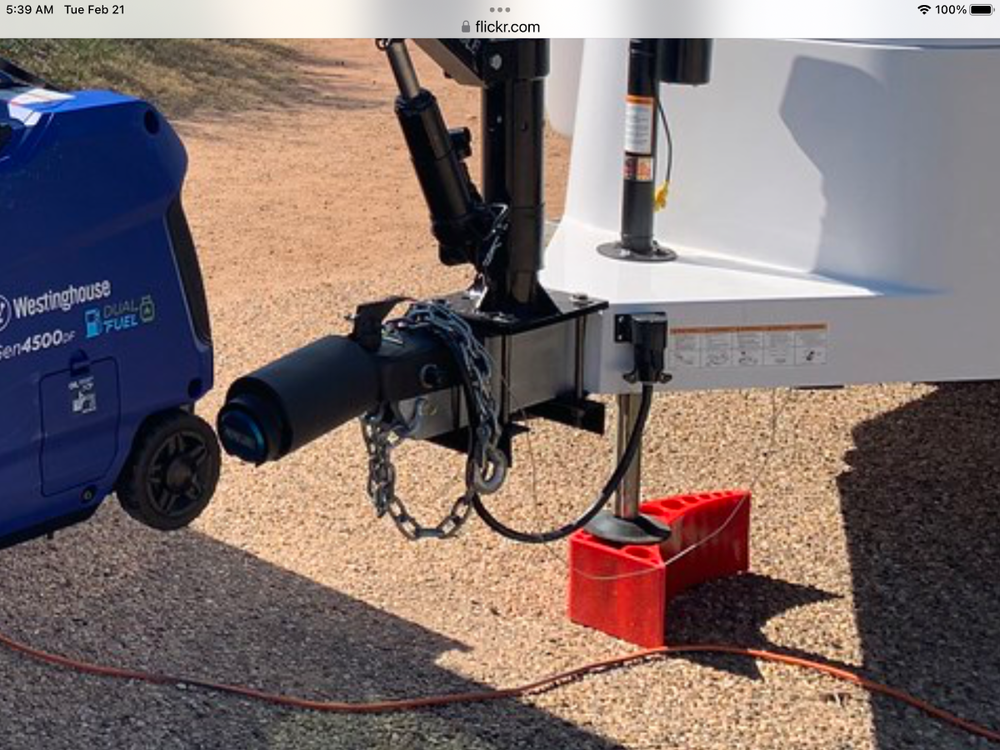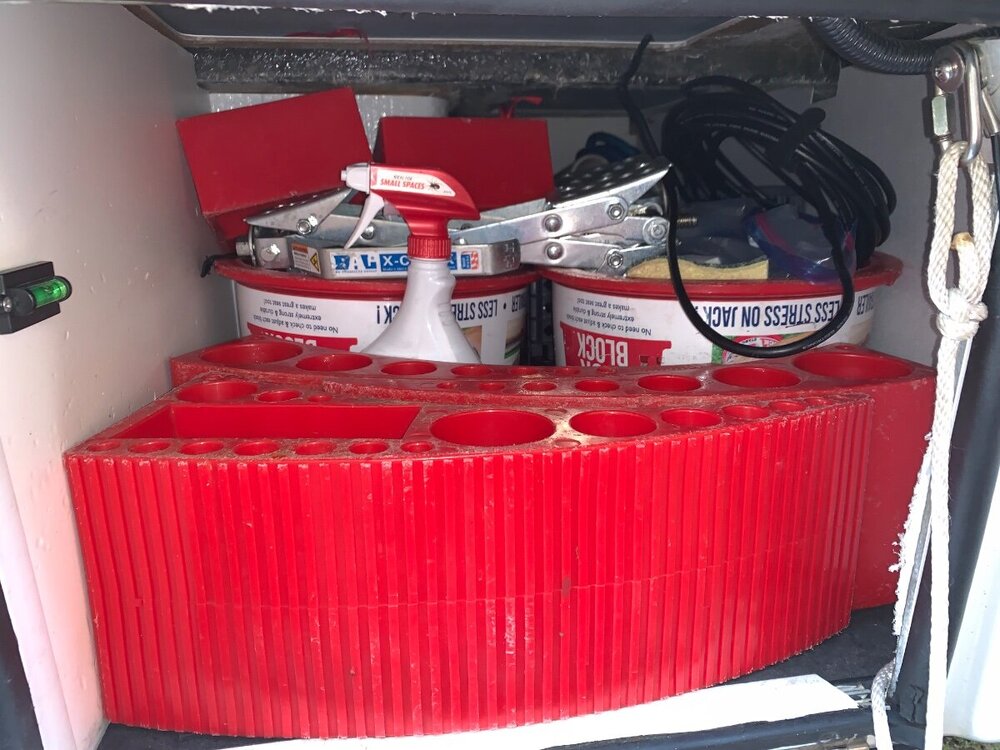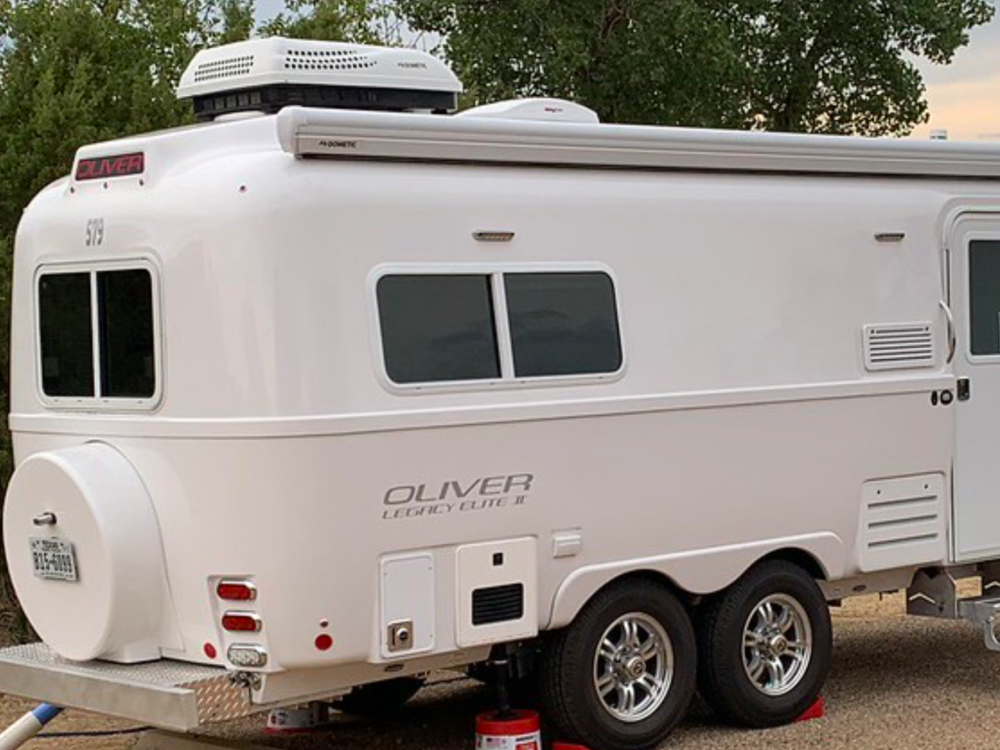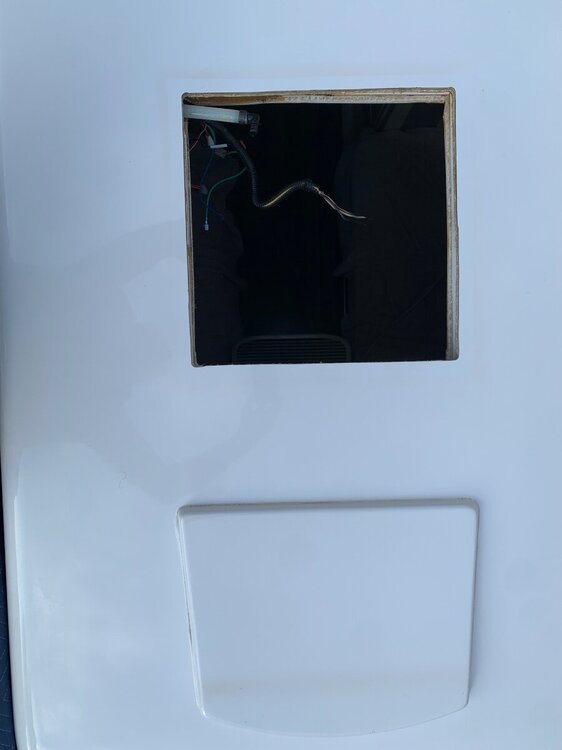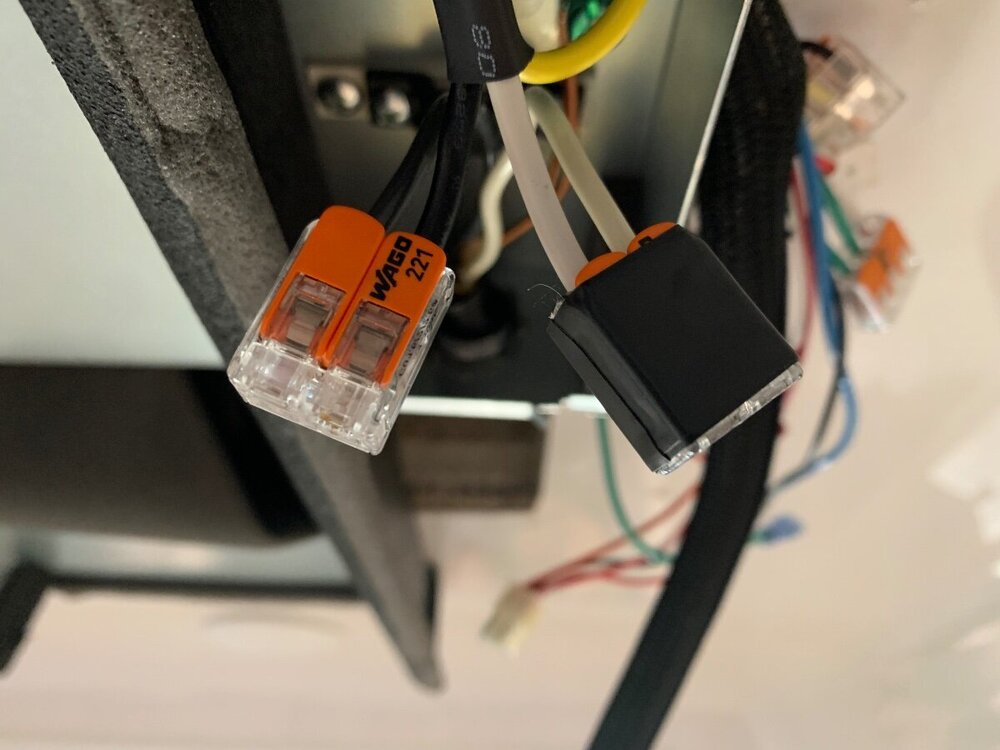
Ronbrink
Member+-
Posts
906 -
Joined
-
Last visited
-
Days Won
21
Everything posted by Ronbrink
-
Fridge Problems only on Propane
Ronbrink replied to carnivore's topic in Mechanical & Technical Tips
Just returned from a week long trip since the two exterior exhaust and an interior fin fan were installed on the Norcold 3-way. Prior uses required levels 7-9 depending on time of year, for example level 9 in 100+ Texas temps. Although ambient temps this go were mostly mid 80 to lower 90s, level 5 was the sweet spot for all modes of operation; level 6 was not egg friendly at the top shelf in front of the fin/fan combo and ice in the freezer was too cold to handle with wet fingers! No doubt this fan system, as described, vastly improved the efficiency of my unit and will hopefully extend its’ life. -
Fridge Problems only on Propane
Ronbrink replied to carnivore's topic in Mechanical & Technical Tips
Your LP regulator may not be functioning properly, check if the cooktop operates correctly or the QC ports, if equipped. Switch the regulator to the other tank, a tank valve may have been opened too fast and has an internal shutdown. If that doesn’t work close each and reopen slowly for the first quarter turn to reset. -
True that! At times when positioning to dump the back of the Oliver will be a tad higher than the tongue with the TV sloped downward; like the dump point is on a slight peak, perhaps to accommodate runoff. That was the case yesterday at the newly installed dump site next to the new park headquarters at Tyler SP. Typically a lift with 60-70 psi gets it done, but as much as 80 at a few sites encountered.
-
-
I installed an Air Lift LoadLifter 5000 air suspension kit on my TV soon after purchasing my OLEll. This system compensates for side-to-side weight distribution and cargo shifting, and is very useful in adjusting the rear height to level the trailer when towing. I also find it helpful in dumping the waste tanks by lifting the tongue high for improved discharge.
-
Rodger the high humidity! My former Dometic 11,000 BTU was a little less power hungry than the 13,500 BTU units, compressor draw usually ranged from 105 to 120A; thus, percent of power consumption would be less. The Atmos compressor draw ranges from 96 to 103A based on limited observations.
-
I see where your batteries were 61/62°, what was the outside ambient temperature? Trying to comprehend such as minimal battery drawdown with an hour of use; perhaps the fans were mostly running and not the compressor due to cold conditions. Also, I noticed in the video that the interior cover is mounted with the control panel end facing rearward, whereas most installations viewed has it facing forward, as specified in the installation Manual. Did you specify that orientation? I would think said panel would be much more accessible if turned around, especially with the bed in the OLEl. Regardless, the Atmos is an amazing upgrade, I share your enthusiasm!
-
I have no first hand knowledge of this, but the question has been raised before; hopefully someone will come forward with an affirmative answer.
-
My bad, the silicone hose is used as a gray water discharge on the cam lock end of the rear tank dump outlet. A 4’ length of clear PVC reinforced braided hose with a garden hose barb fitting is used for the water draw, silicone would collapse. Both PVC hose and fitting were from Lowe’s, silicone hose an Amazon purchase. PVC hose: Silicone hose:
-
This is a great idea, but with no room to haul a bucket we carry collapsible water containers and a dedicated hose to draw water into the tank; stow under the street side bed behind the stabilizer jack assembly. EDIT: Original comment stated a ‘silicone’ hose, but actually it is a flexible PVC hose, as detailed in further comment.
-
Did the unit sold for that price have a soft starter device installed? I plan to sell my Dometic with a Micro-Air Easy Start and thinking that would up the sell price somewhat.
-
In the meantime, I suggest using OdoBan to mask the unpleasant smell. Spray inside the vanity, into the black tank area from within the forward dinette seat hatch and any other suspect areas.
-
Beech lane levelers for for Legacy Elite II
Ronbrink replied to TxMN2020's topic in Mechanical & Technical Tips
I have topped these ramps a couple of times, that’s where the stabilizer jacks really shine to lift the body a tad more for level without lifting the tires anymore. -
Beech lane levelers for for Legacy Elite II
Ronbrink replied to TxMN2020's topic in Mechanical & Technical Tips
The Anderson Jack Blocks are great, like that they have magnets to ease attachment and centering. As for the front stabilizer, I use a Rapid Jack on its’ side. I have used it as intended to change a tire, despite claims it won’t work on an Oliver. It stows alongside its’ cousins in the garage! -
Running the Truma AC when boondocking
Ronbrink replied to silversportsman's topic in Mechanical & Technical Tips
Great genny, I have the Westinghouse version of the same; really like the remote start/stop FOB. -
Very nice upgrade, recently installed one in an OLEll as detailed in my post in Ollie Modifications. What is the total Ah of your battery bank?
-
Furnace is not a problem, but running the a/c off battery for more than a few hours will be too tasking for the average battery bank. I carry a small dual fuel genny and use propane for overnight stays when a/c is needed off-grid. That said, lengthy travel stops for rest, lunch, shopping, etc. are prime times to use the a/c on battery since when back underway the DC-DC will likely recharge as you reach the day’s destination.
-
Just saw this. If the 10A fuse has posed no issues with use of the 100W solar panels, then no need to change.
-
I noticed in review of @rideadeuce’s install post that his 2018 OLEll, #308, with a Dometic 13,500 BTU unit did not have that feature. In his situation the straight piece of self-adhesive foam was placed onto the rear bottom of the Atmos, as I initially did, and served its purpose to support and level. Oliver started installing DPll 11,000 BTU units in my year model (2020), which may have prompted a change over the former 13,500 BTU unit installs.
-
This long awaited swap-mod is now checked off my to-do list! Like many, I tolerated the noisy Dometic Penguin ll long enough; so glad I was finally able to take decisive action with this install. After a couple years of mulling over the various replacement models being marketed, a unit emerged that caught my attention; the newly available Atmos 4.4 seemingly met all of my expectations. I will forego the removal of the Dometic, here is how I proceeded forward: First and foremost, all AC and DC power sources were turned OFF! Scaffolding and equipment/supplies were then staged for Dometic ‘liftoff’ and subsequent Atmos ‘lunar landing’ (only appropriate since I live a couple miles from the NASA Mission Control Center in Houston). Roof area in need of cleaning. Notice the raised fiberglass landing on my year model and that the former condensate drain tube was simply disconnected rather than cutoff. Roof area throughly cleaned and prepped. I decided to adhere the square self-adhesive foam roof seal directly onto the fiberglass and then apply non-leveling Dicor around the cutout perimeter to further ensure the best seal possible. In positioning the foam seal, care was taken to center it as evenly possible, thereby allowing about 1/4-3/8” of exposed fiberglass to lay a bead of the Dicor and finger smooth to finish. Interior view of the Atmos being positioned over the roof cutout. Note the use of the mounting bolts as a guide, as recommended by SDG. Because the ‘rough cut’ edges of the layers of fiberglass (inner and outer hulls, and spacial filler) were inconsistent, I used the foam seal as a reference to accurately center and align the unit; distances measured to each respective bolt. Initially, installation instructions were followed by adhering the supplied straight piece of self-adhesive foam onto the bottom of the unit as a rear support, but it did not make contact with the roof due to relief of the aforementioned fiberglass landing. Alternatively, the foam piece was cut in half and each adhered onto the fiberglass, in like manner as the square seal, along the outer edges of said landing. This adaptation proved very effective in application and purpose, as the last of the next three pics demonstrates. Now that the exterior unit is properly positioned and supported, it’s back inside to further installation. As a side note, I made use of a portable a/c to buffer the heat and humidity of the day! Although my son helped with the heavy lifting and positioning, I cut him loose and completed the remaining tasks solo. Before proceeding, I used foil tape to treat the end of the aforementioned condensate drain tube and secure it to the side. Next the installation of the fabric air plate duct subassembly was started (provided Dreiha Atmos 4.4 Manual details the process). Note I used foil tape on both the upper (at Atmos bottom) and lower (at mounting frame) duct plates, even though most installs viewed applied to the mounting frame plate only. Between the upper and lower duct plate installs, the ceiling assembly mounting frame was bolted in place and hand torqued using a screwdriver only (torque specified in Manual). The AC power connection was very straightforward. The ceiling assembly’s junction box cover was removed, a strain relief fitting installed at one end (the other end had a preinstalled protector) and respective wires routed inside. I reused the Wago Lever-Nuts from the Dometic install, but first tinned the stranded wires of the Atmos lead for optimum assurance in application; electrical tape was used to further secure the Wago connectors. Ground wires were secured per the Manual. The junction box cover was then replaced, DC thermostat wire bundle loom wrapped and tucked away for future use, and ceiling grille fastened in place. . I’m very pleased with this mod, quality of the Atmos and ease of installation! I should mention that SDG preinstalled a SoftStartRV. I will provide an update once the furnace wiring and thermostat mount is completed. A special shoutout to @rideadeuce for forging the way with his install of an Atmos!
- 134 replies
-
- 16
-

-

-

-
Beech lane levelers for for Legacy Elite II
Ronbrink replied to TxMN2020's topic in Mechanical & Technical Tips
The Beech Lane and Anderson brands of levelers look to be the same in appearance and design other than in color, black and red, respectively. Although there is a diverse selection of levelers available, this tear drop ramp-type leveler pairs well with OTTs, especially when used in conjunction with a cell phone app leveling systems as @Patriot and @jd1923 refer. Reason being these systems will indicate if leveling adjustment needs to occur side-to-side, then the leveling ramp(s) can be positioned on the side to be raised and vehicle driven onto them until level according to the app. Set the TV emergency brake, position the wedge(s) of these setups, detach trailer, complete front-to-back leveling per the app utilizing the forward stabilizing jack. -
Actually, great idea! I have a Renogy 40A DC-DC and run my a/c on LFPs via inverter while underway quite often; the total amp draw by the a/c is offset by the output of said charger. I should mention, no solar. In some instances, owners run for long duration to keep pets comfortable inside the Oliver when in transit. The only problem I’ve experienced was an aging alternator in my TV; the vehicle battery was not being properly maintained, but installation of a new high output alternator resolved that issue.
-
Saturday’s install was a success! Soon I will post ‘Dreiha Atmos 4.4 Home Install’, but for now a few pics. BTW, sitting in the Oliver at home enjoying my morning coffee, Atmos whisper ‘cool’; I can actually hear myself thinking of things to come!
-
Fun fact, Airstream once had a trailer that was painted white called an Argosy.


